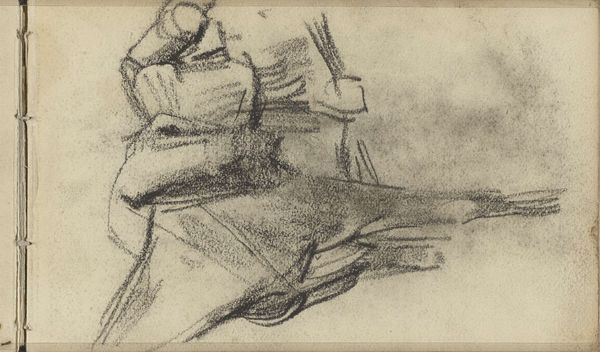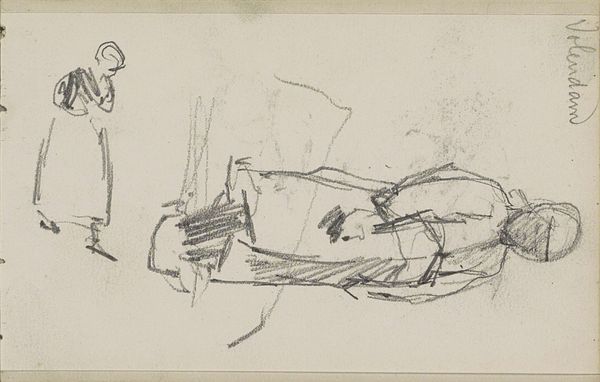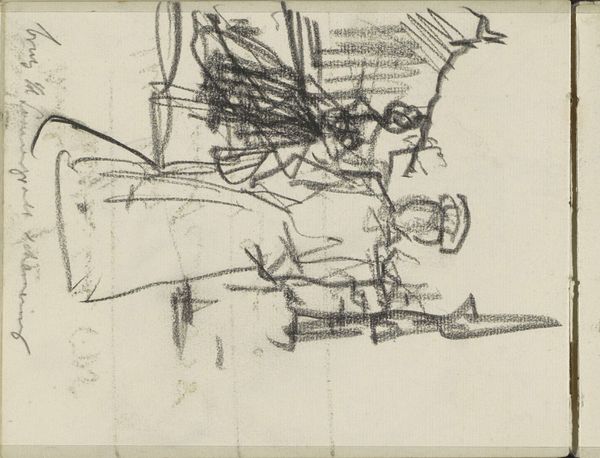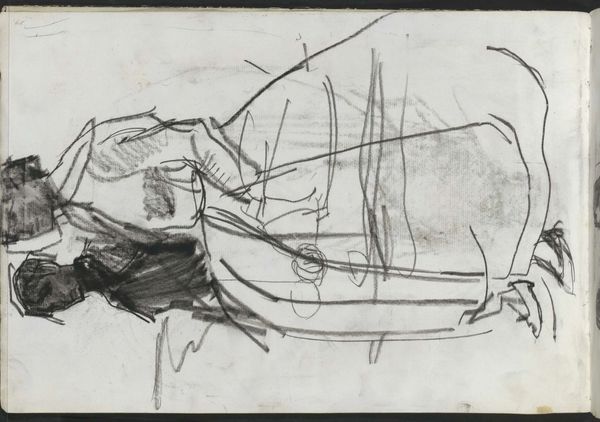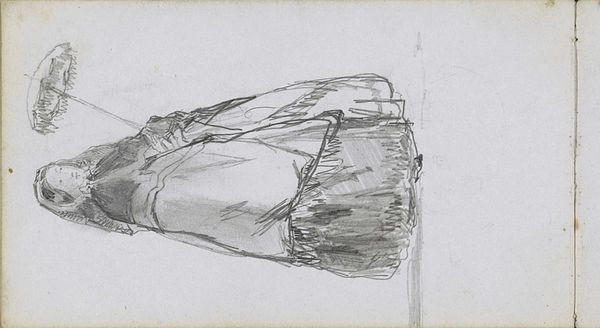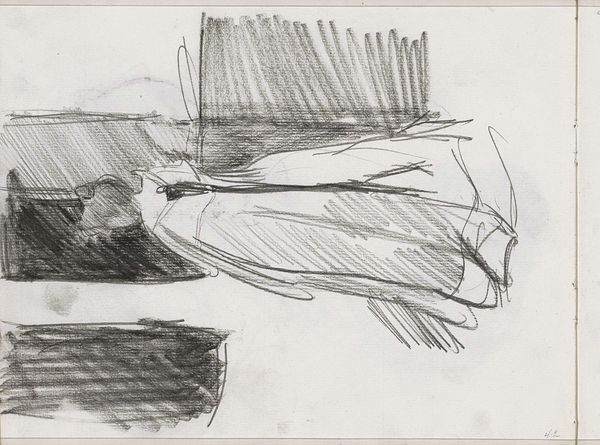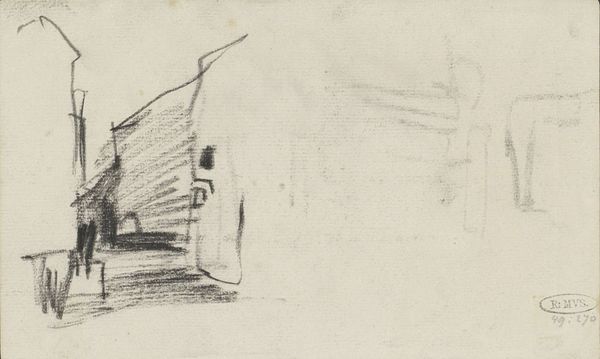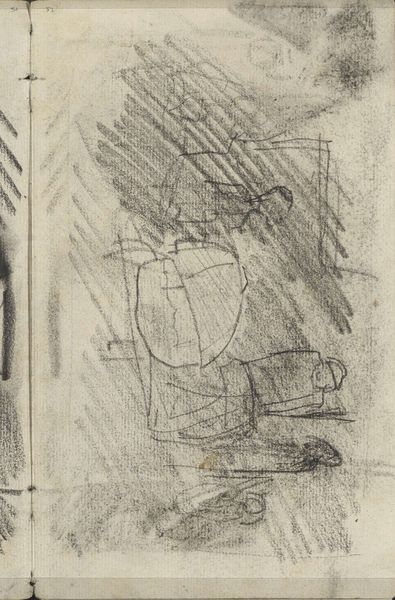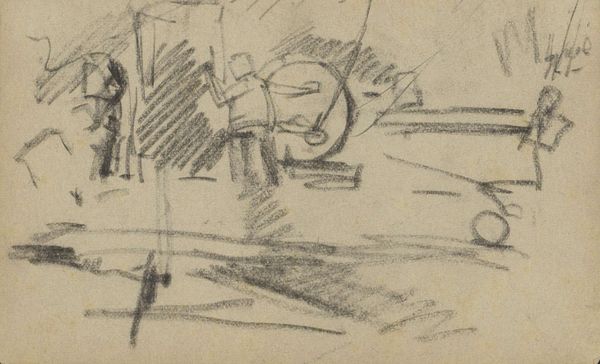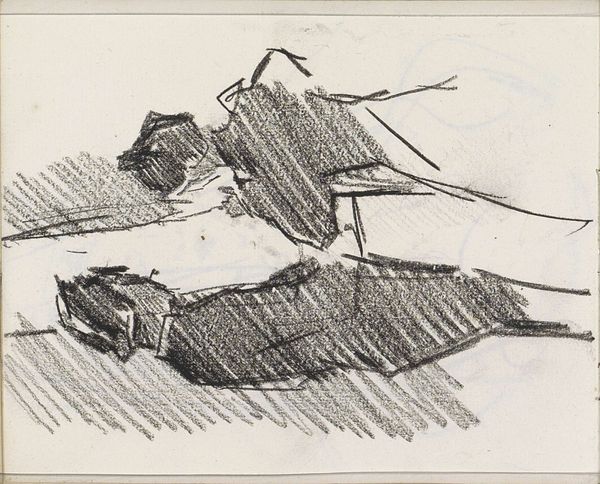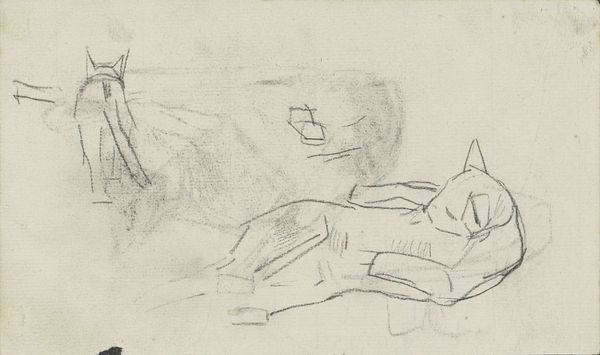
drawing, pencil
#
drawing
#
amateur sketch
#
quirky sketch
#
shading to add clarity
#
impressionism
#
pencil sketch
#
sketched
#
incomplete sketchy
#
landscape
#
personal sketchbook
#
idea generation sketch
#
sketchwork
#
pencil
#
initial sketch
Dimensions: height 111 mm, width 192 mm
Copyright: Rijks Museum: Open Domain
Editor: So, this is "Paard-en-wagen" - "Horse and Wagon" - by George Hendrik Breitner, likely from the late 1870s or early 1880s. It's a pencil drawing held here at the Rijksmuseum. It feels very immediate, like a snapshot, but also unfinished. What's your take on it? Curator: It’s interesting how Breitner captures the fleeting moment. Consider the social context: industrialization was rapidly changing Amsterdam. Breitner, drawn to the everyday life of the working class, frequently depicted horses and wagons that were still so common in the urban landscape at the time. Does the sketch convey the social climate, do you think, beyond just depicting transportation? Editor: I think so. It definitely captures the hustle and bustle. It feels like you’re just catching a glimpse as it passes by. Almost like a scene that you see for a few seconds and then goes. But, this looks so raw. How does that fit within the history of art production? Curator: Precisely! The sketch is revealing; consider how quickly the scene would unfold in real life. Breitner wasn't trying to create a highly finished, idealized image. Instead, this rawness gives us access to the rapid changes and the immediacy of urban experience. In what ways does this "snapshot" aesthetic challenge the artistic norms of the time? Editor: Well, traditionally, art was about permanence and idealization. This sketch feels like it embraces the ephemeral and the imperfect, suggesting that everyday life and ordinary scenes are worthy of artistic attention. Curator: Exactly. It's an embrace of modernity. This interest in capturing a single, real-time experience moves away from staged scenes towards a candid approach. This style makes the piece have more value than we might give it at first. It allows you to observe more about a time you weren’t there to experience. Editor: That makes a lot of sense. I never considered how much information could be held in one piece. Curator: Absolutely. Art, at its best, opens a window onto history and society, letting us explore perspectives often overlooked. This sketch really captures more than meets the eye!
Comments
No comments
Be the first to comment and join the conversation on the ultimate creative platform.

